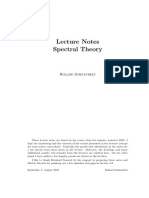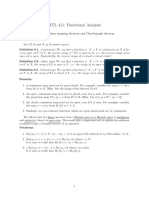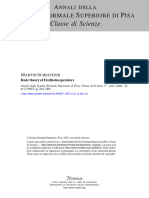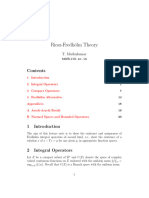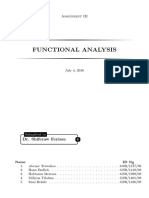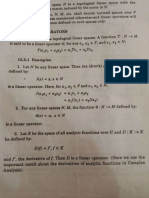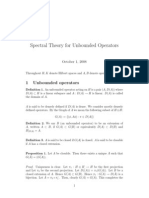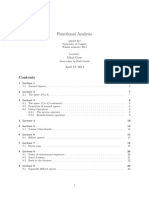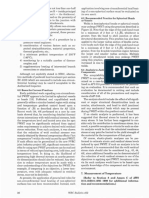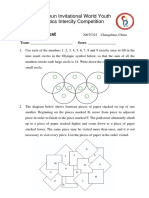0% found this document useful (0 votes)
121 views27 pagesFunctional Analysis
The document summarizes some important theorems related to closed linear operators between normed linear spaces, including: 1) The closed graph theorem, which states that a linear operator between normed linear spaces is closed if and only if its graph is a closed subset of the product space. 2) The closed graph theorem implies that every closed linear operator between Banach spaces is continuous. 3) If the domain of a closed linear operator is a closed subspace, then the operator is closed. Conversely, if the range is a Banach space and the operator is closed, then the domain must be closed.
Uploaded by
abhisheks5987Copyright
© © All Rights Reserved
We take content rights seriously. If you suspect this is your content, claim it here.
Available Formats
Download as PDF, TXT or read online on Scribd
0% found this document useful (0 votes)
121 views27 pagesFunctional Analysis
The document summarizes some important theorems related to closed linear operators between normed linear spaces, including: 1) The closed graph theorem, which states that a linear operator between normed linear spaces is closed if and only if its graph is a closed subset of the product space. 2) The closed graph theorem implies that every closed linear operator between Banach spaces is continuous. 3) If the domain of a closed linear operator is a closed subspace, then the operator is closed. Conversely, if the range is a Banach space and the operator is closed, then the domain must be closed.
Uploaded by
abhisheks5987Copyright
© © All Rights Reserved
We take content rights seriously. If you suspect this is your content, claim it here.
Available Formats
Download as PDF, TXT or read online on Scribd
/ 27
